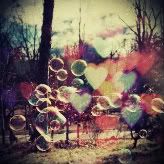
Now, he is a remarkable Dutch artist and a kinetic sculptor. He builds large works which resemble skeletons of animals and are able to walk using the wind on the beaches of the Netherlands. His whole concept and works are a fusion of art and engineering.
This video was filmed at the Scheveningen Beach, near The Hague, Netherlands. Don’t be shocked to know that everything is made from wood and plastic bottles. Nothing to do with electronics! Now, that’s the true art!
“When the weather was beautiful I thought it was a waste of time to sit in front of the computer” says Theo Jansen. For the last 15 years he has been evolving a series of wind-powered animals, made of plastic tubes. When these constructions are fed by wind, they set into motion and transmute into organic-looking creatures; or beach-animals as Jansen calls them.

Due to his achievement, Theo Jansen received the Jury’s Special Price in the Interactive Art category at Arts Electronica Festival 2005.
The first beach animal he created didn’t have strong joints. It couldn’t even walk or stand, but one night he had a vision about the principle of its feet. So, based on the simple PVC tubes he still use, he built a computer model and tried to calculate the best way to create a walking movement. This process went on for some months, day and nights before he found the right proportion between the lengths of the tubes. It’s not important just to make things, but also to reflect about them.

Kindly click HERE to learn more about the leg movements.
He didn’t try to imitate animals. He just wanted to create something new. Later on, it turned out that real animals already used the same principle so when people look at the beach animals they often recognise the movement of an animal. But that wasn’t his intention.

Theo Jansen uses plastic tubes and bottles to create amazingly lifelike creatures moved by windpower. These 'strandbeesten' (beach creatures) look so organic that they seem to be alive.
Because of the beach animals he is often outside in rain and storm and he like that a lot-apart from the heavy storms. He has often been alone on the beach with a herd of animals and when the wind came by, the whole herd would collapse and roll over the beach. Everything would go out of order.

“Your head is also a computer. When you're dreaming you are simulating a world in which you are living. During the night, it's a dream you can't control and during the day it's more like a second life in your head. It's all interpretations of the real world” says Theo Jansen.
The next step for Theo Jansen will be their brains. Now they have stomachs and can walk on air. But the brains are something, which they really need. Right now, he can only leave them alone for 5 minutes and if he wants to extend that period they really must learn to think for themselves.
It is made from PVC pipe. They are not strong enough to hold people. If they touch the ocean they will stop and start walking backwards because of a air pressure system that includes some clear tubes and a 2 liter soda bottle. If it walks into the water it senses it, and walks the other way, if it walks into sand dunes it again walks the other way. They also store energy (wind) in plastic bottles so when there is no wind they can get out of the rising tide.
I think this has everything to do with the last few seconds of the commercial, where he says "the walls between art and engineering exist only in our minds," "And few have the ability to see beyond them." Meaning that BMW, as a company, brings art and engineering together in their cars. These things are so cleaver - they 'survive' on their own. Theo Jansen basically created something out of nothing.

However, I don’t see any BMW cars in the advertisement. Not that it is necessary, but this advert seemed to promote Theo Jansen more than BMW cars. If I were to buy a car, I wouldn’t be attracted to BMW cars because of this advert.
Labels: Michelle Ng
